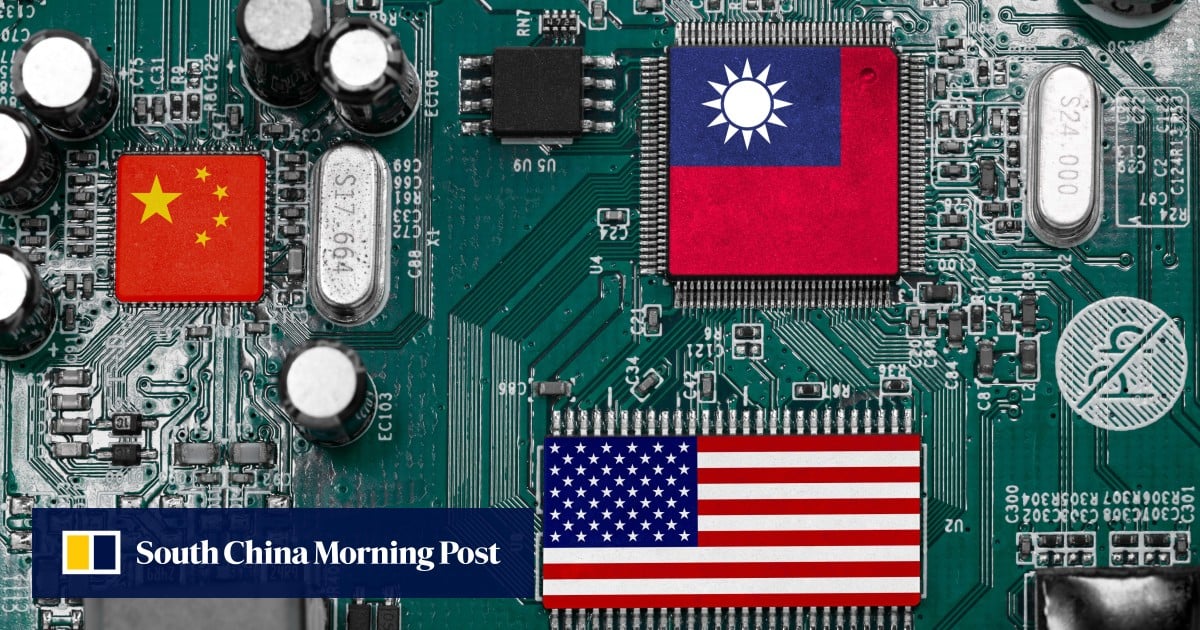


US officials have placed import tariffs on goods from mainland China since 2018, while also restricting American business with a growing list of Chinese technology firms.
The US Department of Commerce’s Bureau of Industry and Security updated its export controls in 2022 to stop China from obtaining advanced semiconductors, technology and related equipment, with the controls further tightened a year later.
The US government is also offering Taiwan chip makers, which are among the world’s most advanced, incentives to set up plants in the US.
There are some Taiwanese exports that had gone to [mainland] China that are now going to Southeast Asia
Supply chain bottlenecks in China due to coronavirus controls up to the end of 2022 also added to the shift in supply chains to outside mainland China.
Taiwan’s exports to the 10-nation Association of Southeast Asian Nations (Asean) bloc reached US$22.281 billion in the first quarter of 2024, up by 33.4 per cent compared to the same quarter last year.
The Asean bloc is an up-and-coming factory region that is seen as relatively neutral toward China and the US.
“This, I think, is a shift in supply chains,” said Darson Chiu, a fellow with the Taiwan Institute of Economic Research.
“There are some Taiwanese exports that had gone to [mainland] China that are now going to Southeast Asia.”
Taiwan-mainland China investment hits 22-year valley as relations sour
Investors from Taiwan with factories in mainland China once loomed larger as importers of Taiwanese parts, but US-China trade friction plus cross-strait tensions have prompted some operators to leave while others have been deterred from starting operations.
Beijing sees Taiwan as part of China to be reunited by force if necessary. Most countries, including the US, do not recognise Taiwan as an independent state, but Washington is opposed to any attempt to take the self-governed island by force and is committed to supplying it with weapons.
Tech hardware made up 31.7 per cent of Taiwan’s overall exports in the first quarter.
US importers have “lifted” Taiwan’s shipments of chips, while mainland China requires fewer Taiwanese semiconductors because it is developing its own domestic industry, Moody’s Analytics economist Harry Murphy Cruise said.
Mainland Chinese chip production “surged” by 40 per cent in the first quarter to meet demand for electric vehicles, he added.
‘The magic of China’: still lots for foreign firms, top business leader says
“This shift is due to the strategic plan that the US wants to construct a US-led world supply chain and market order,” said Hu Jin-li, a professor with the Institute of Business and Management at the National Yang Ming Chiao Tung University in Taipei.
Mainland China, meanwhile, is trying to form a global supply chain that is sheltered from any US intervention, Hu added.
US demand for Taiwanese chips would “remain robust” until efforts at reshoring semiconductors to the US mature, Murphy Cruise said.
Demand for other hi-tech hardware is also surging, said George Xu, director of Asia-Pacific sovereign ratings with Fitch Ratings.
“Taiwan’s record-high merchandise exports to the US in the first quarter of 2024 has been propelled by surging shipments of information and communications technology products manufactured and assembled on the island,” Xu said.
He pointed to growing demand from large US tech companies for artificial intelligence related products, such as high-performance servers and cloud computing equipment, where “Taiwanese suppliers dominate the global market”.
But mainland China’s interest in shipments from Taiwan would eventually recover, Murphy Cruise added.
Because of the China-US trade issues, they’ve left for Vietnam and Indonesia, and are now considering India
“A gradual revival in [manufacturing] this year will support Chinese demand for Taiwanese goods,” he said.
Overcapacity in some low-tech industries in mainland China has deterred Taiwanese investors who might require imports from Taiwan, said Danny Ho, the chief executive at DMI, an energy consulting firm in Taiwan.
“This trend is obvious and clear,” Ho said. “Because of the China-US trade issues, they’ve left for Vietnam and Indonesia, and are now considering India.”